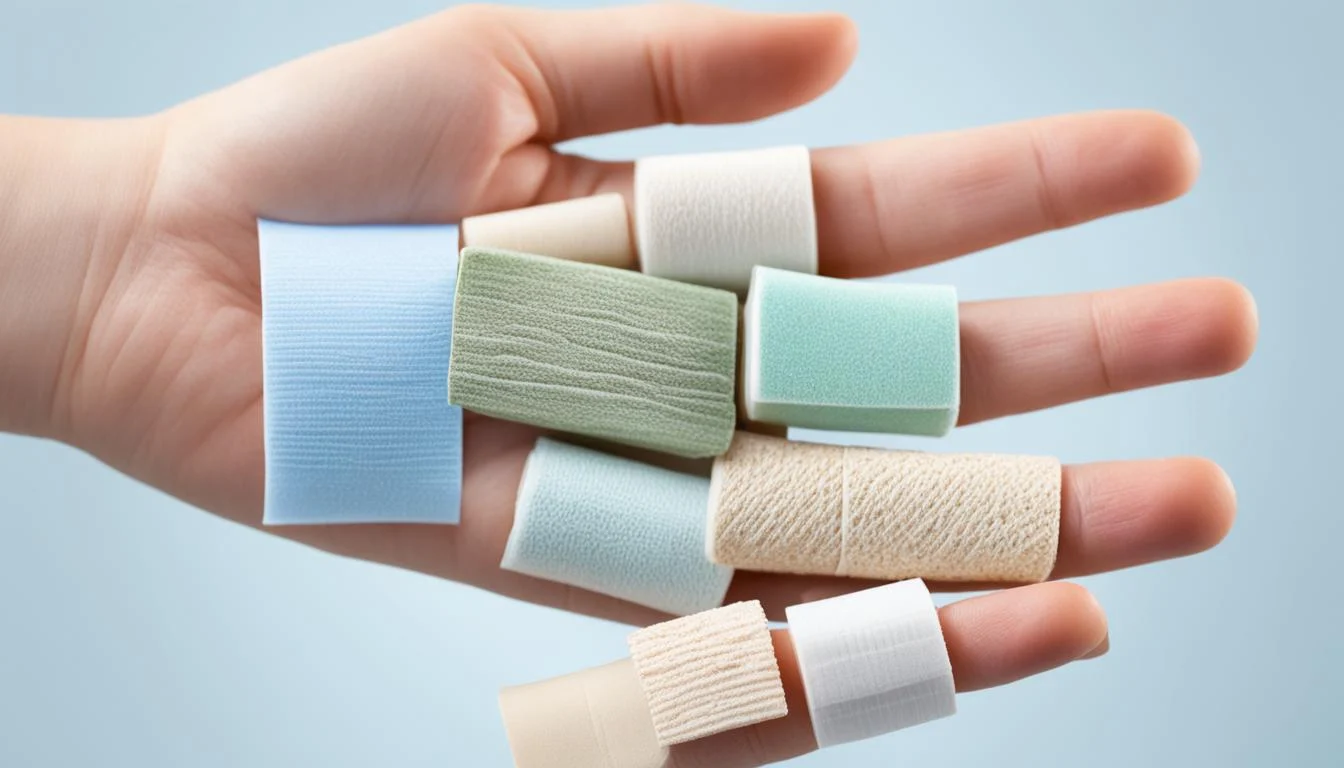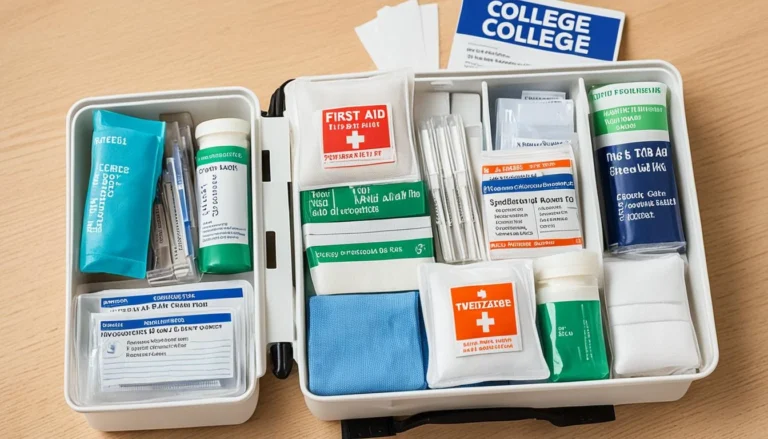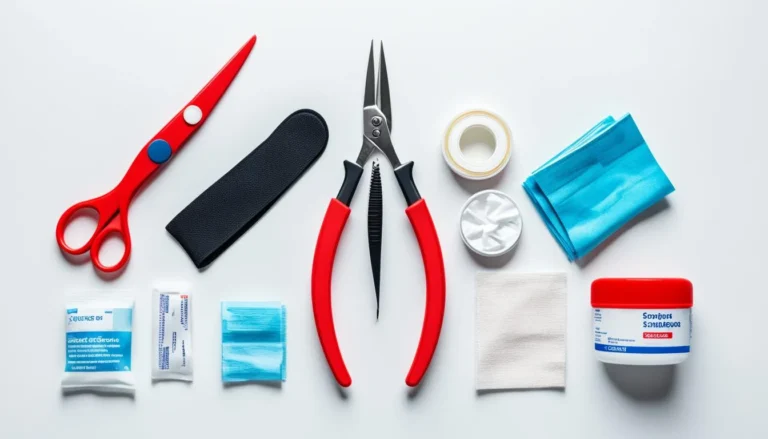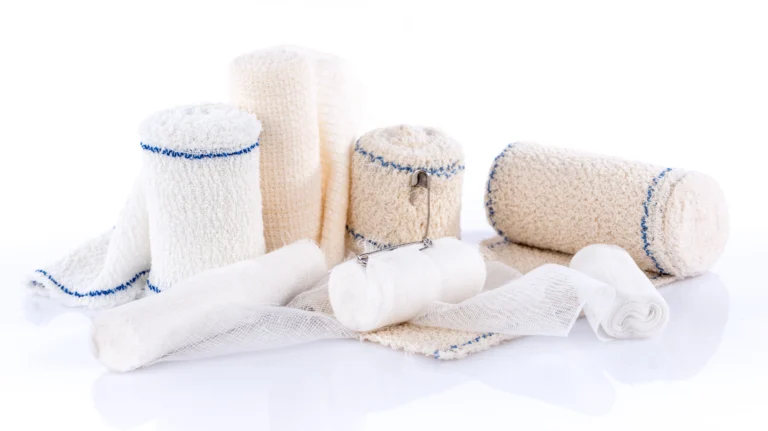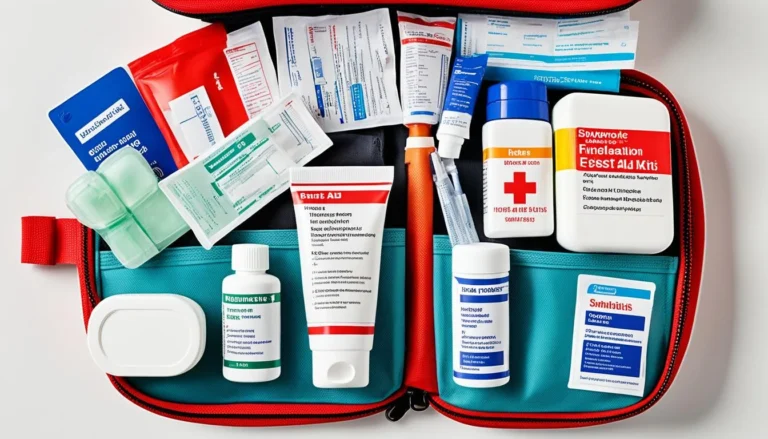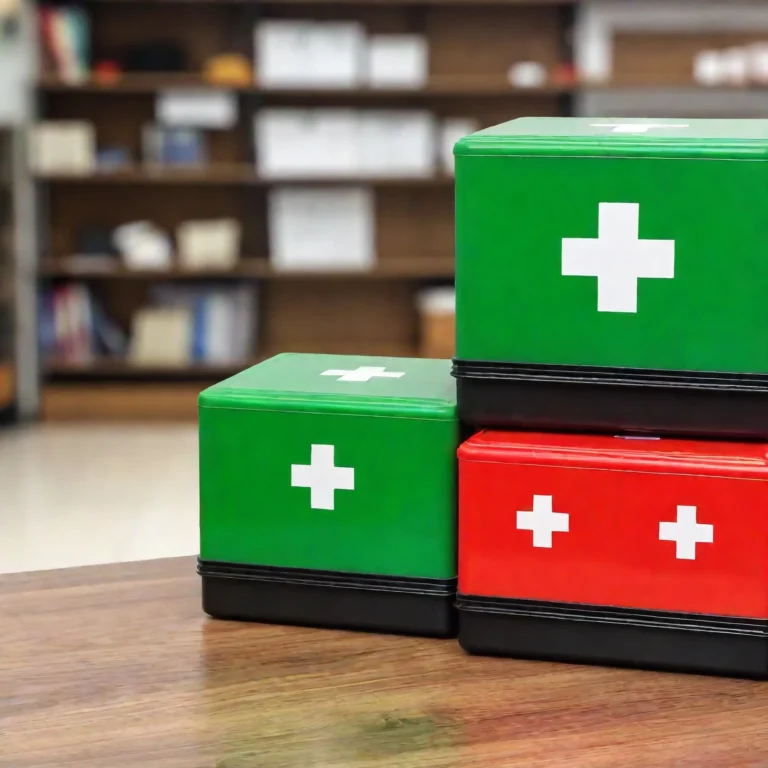Bandage Vs Plaster: Choosing the Right Cover
Did you know almost 50% of minor wounds in the UK get infected because they aren’t dressed properly? This figure shows how crucial choosing the correct wound cover is. The choice between a bandage and a plaster can greatly affect how quickly a wound heals. Factors such as the wound’s size, where it is, and how old it is matter a lot.
Putting a plaster on a wound keeps it moist, which is good for healing, and stops it from getting infected. If a wound is left uncovered, it can pick up dirt and bacteria or get hurt again. Changing the plaster or bandage often not only keeps the wound clean but also lets you check how it’s doing. This smart care approach is key to helping wounds get better.
Key Takeaways
- The choice between a bandage and a plaster depends on the wound’s features and its healing stage.
- Covering a wound with a plaster can stop infection and creates an ideal moist healing area.
- An unprotected wound is in danger of collecting dirt and bacteria, which can cause problems.
- It’s vital to change wound coverings regularly for both cleanliness and to track healing.
- To heal a wound well, it’s important to cater to its specific needs with the right care.
Introduction to Wound Care: Bandage Vs Plaster
Treating wounds is very important in first aid in the UK. Bandages and plasters are key tools for this. They help with anything from small cuts to bigger injuries. They aid in healing and stop infections.
There’s been a lot of talk about whether to let wounds “breathe” or not. But science shows covering them is best. Plasters keep the wound moist for better healing. Bandages are great when you don’t want to change them often or you need to move comfortably.
Knowing when to use plasters or bandages is vital. Plasters are good for little cuts that need to stay wet to heal. Bandages work well for bigger or complicated wounds. They provide the support and flexibility needed for these cases.
The table below shows the main benefits of each type of dressing:
| Wound Dressing Type | Primary Uses | Key Benefits |
|---|---|---|
| Plasters | Small cuts, minor abrasions | Keep wound moist, protect from infection |
| Bandages | Large wounds, supporting injuries | More flexibility, changes not needed so often |
Knowing the right time to use each dressing is crucial. This helps wounds heal well. It ensures the help given is just what the wound needs.
Understanding the Basics: What Are Bandages?
Bandages are essential for managing wounds. They hold dressings in place, offer support, and control swelling. You’ll find them in every first aid kit. These bandages range from simple adhesive strips to special wraps for body parts. This range means they meet many medical needs.
Types of Bandages
There are many bandage types for different uses. Some common ones are:
- Gauze Bandages: These are great for securing dressings. They are flexible and cut-to-size.
- Elastic Bandages: They offer compression and support. They’re ideal for sprains and muscle injuries.
- Triangular Bandages: They can be arm slings or broad pressure bandages.
- Adhesive Bandages: These plasters are for cuts and scrapes.
Uses and Benefits of Bandages
Bandages have key roles like securing dressings and providing support. They offer several benefits:
- Stabilisation: They help stabilise injuries. This is key for healing well.
- Protection: Bandages keep wounds clean, stopping infection risks.
- Compression: They reduce swelling, aiding in a quick recovery.
- Flexibility: Elastic bandages allow joint movement. This is good for healing.
By knowing about different types of bandages and their benefits, wound care improves. It makes recovery quicker and smoother.
Understanding Plasters: What You Need to Know
Plasters, or adhesive dressings, are key for wound care. They keep germs out and make a good place for wounds to heal. In the UK, there are many kinds of plasters for different needs.
Different Types of Plasters
There are various plasters for different needs. Waterproof plasters help keep wounds dry. Antibacterial plasters fight germs to prevent infections.
Below is a quick look at the kinds of plasters you can get in the UK:
- Fabric plasters: They are great for being flexible. Best for areas that move a lot.
- Waterproof plasters: Keep wounds dry, essential for outdoor activities or when showering.
- Hydrocolloid plasters: They create a moist healing area, good for most wounds.
- Blue plasters: Mostly used in food areas for easy spotting.
Applications and Advantages of Plasters
Plasters are very useful. They cover and protect small to medium wounds from germs. Changing them often helps in checking how the wound heals.
They come with several benefits too:
- Protection against infection: They form a shield to keep out germs.
- Maintenance of a moist environment: This helps cuts heal quicker.
- Convenient shapes and sizes: Plasters are made in many sizes to fit on any wound or body part.
Bandage Vs Plaster: Which One to Choose?
Choosing the right cover for a wound needs careful review of the wound. This review helps pick the best option. Factors like how much fluid the wound leaks, its place on the body, and if it will get wet matter a lot. Making a good choice helps the wound heal faster and lowers problems.
Think about these points when deciding if you need a plaster or bandage:
- Wound Exudate Levels: A lot of fluid means you need an absorbent bandage. For small wounds that don’t leak much, a simple plaster works just fine.
- Activity Level: If you move a lot, a plaster is better for you. But if you’re less active, bandages are stronger and give more support.
- Exposure to Water: If the wound might get wet, go for a waterproof plaster. Regular bandages don’t work well when they get moist.
- Flexibility Needs: For places like elbows or knees, use a bandage. Plasters are best for straight surfaces like on your arms or legs.
Here are the main differences between bandages and plasters to support your choice:
| Aspect | Bandage | Plaster |
|---|---|---|
| Exudate Management | High Absorbency | Low to Moderate Absorbency |
| Flexibility | Supports Movement | Limited Flexibility |
| Waterproof | Not Typically Waterproof | Waterproof Options Available |
| Ease of Application | May Require Assistance | Easy, Self-application |
Knowing these distinctions helps you pick the right cover for your wound. Choose wisely between a plaster or bandage.
When to Use a Bandage
Bandages are key for supporting injury and managing UK wounds. They provide flexibility and the right pressure. Choosing the right time to use a bandage can really speed up healing and recovery.
Situations Ideal for Bandages
There are key times when a bandage is just what’s needed. It’s perfect when a dressing or firm wrap is essential. For example:
- For support with sprains or strains
- To keep bigger cuts covered and secure
- On parts that need flexibility and firmness
Wrapping the bandage the right way protects the wound. It ensures the best support as it heals.
How to Properly Apply a Bandage
Using a bandage correctly stops it from being too tight or affecting blood flow. Here’s how to do it right:
- Start by washing your hands well.
- Wrap the bandage over enough area to properly support the injury.
- Make sure it’s not loose but not so tight it stops blood flow.
It’s important to keep checking the wound and the bandage. This makes sure they keep working well for healing.
UK wound management
When to Use a Plaster
Knowing when to use a plaster is key for looking after wounds. They are best for wounds that are small to medium-sized. These wounds need to stay moist and be kept away from infections.
Ideal Wounds for Plasters
Plasters are great for minor injuries like cuts, scrapes, and blisters. They’re perfect for wounds that don’t ooze a lot but need some moisture for healing. Plasters are easy to use and keep germs out.
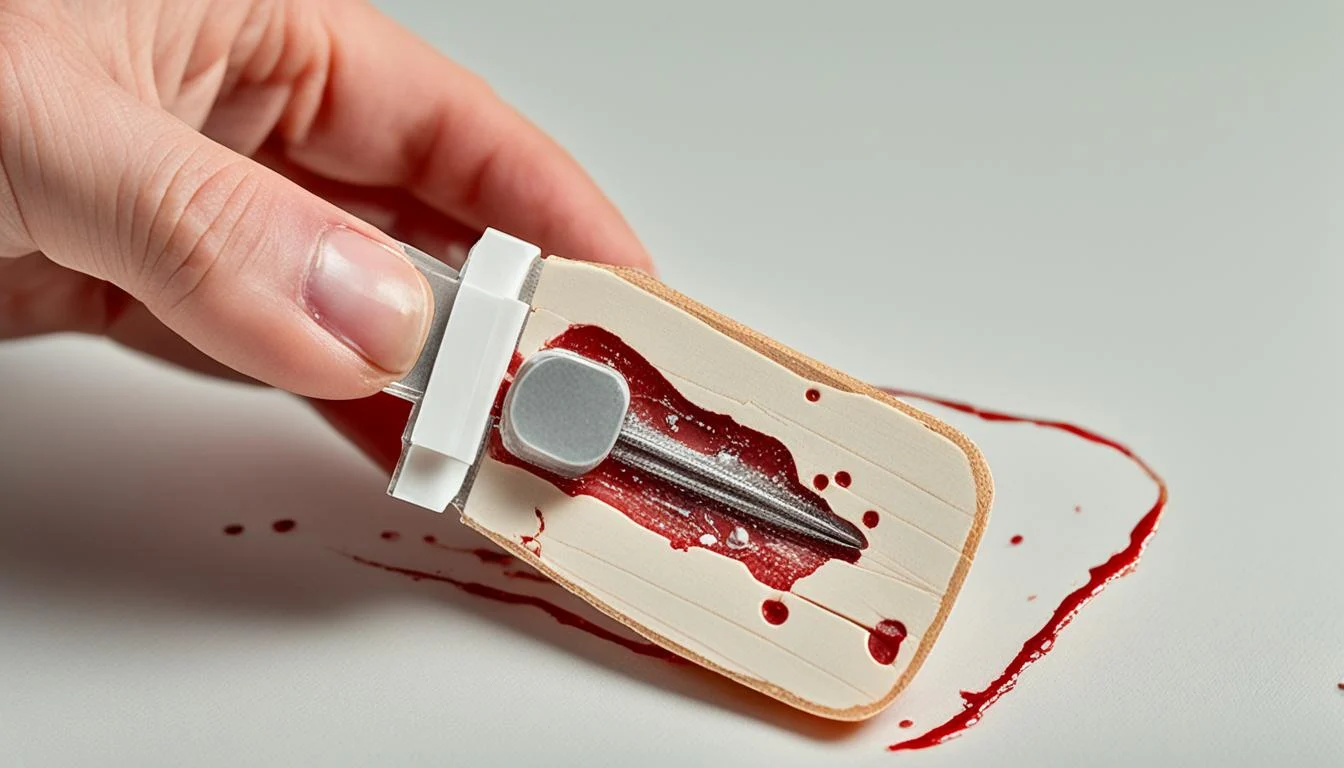
How to Choose the Right Plaster
When choosing plasters, think about if they let air through, if they’re waterproof, and if they kill bacteria. If your injury might get wet, pick a waterproof plaster. If you want an extra layer of germ defense, look for antibacterial plasters. To put on a plaster right, clean the wound and avoid irritating the skin.
The Healing Process: Covering vs. Airing Out a Wound
In wound care, experts often debate air exposure versus covering wounds. The choice depends on the wound healing stages. It’s a key factor in getting better. In the past, people thought letting wounds air out was best, especially after they scabbed. But now, the latest UK wound care methods show that keeping wounds moist can help them heal faster.
Bandages and plasters are important for creating this ideal healing environment. They stop the wound from drying out and getting a hard scab. This helps new skin to grow without scarring. But, the right method depends on the wound’s condition and healing stage.
Many things matter, like wound cleanliness and how likely it is to get disturbed. Here’s how air exposure versus covering a wound can be good at different times:
| Criteria | Air Exposure | Covering |
|---|---|---|
| Initial Healing Stage | May hinder coagulation due to exposure to elements. | Protects against bacteria and dirt, aiding coagulation. |
| Moisture Control | Could result in a dry and brittle scab. | Maintains moist conditions conducive to new skin growth. |
| Protection from Disturbance | Wound is more susceptible to physical disruption. | Provides a barrier shielding from physical knock and contamination. |
| UK Best Wound Care Practices | Less recommended due to infection risks. | Highly recommended for preventing infection and promoting healing. |
Choosing the right practice, based on the UK’s best wound care methods, is essential for the wound healing stages.
Benefits of Covering a Wound with a Plaster
Plasters help wounds heal better. They keep bad things out and create a good spot for recovery. This way, wounds can heal faster and without trouble.
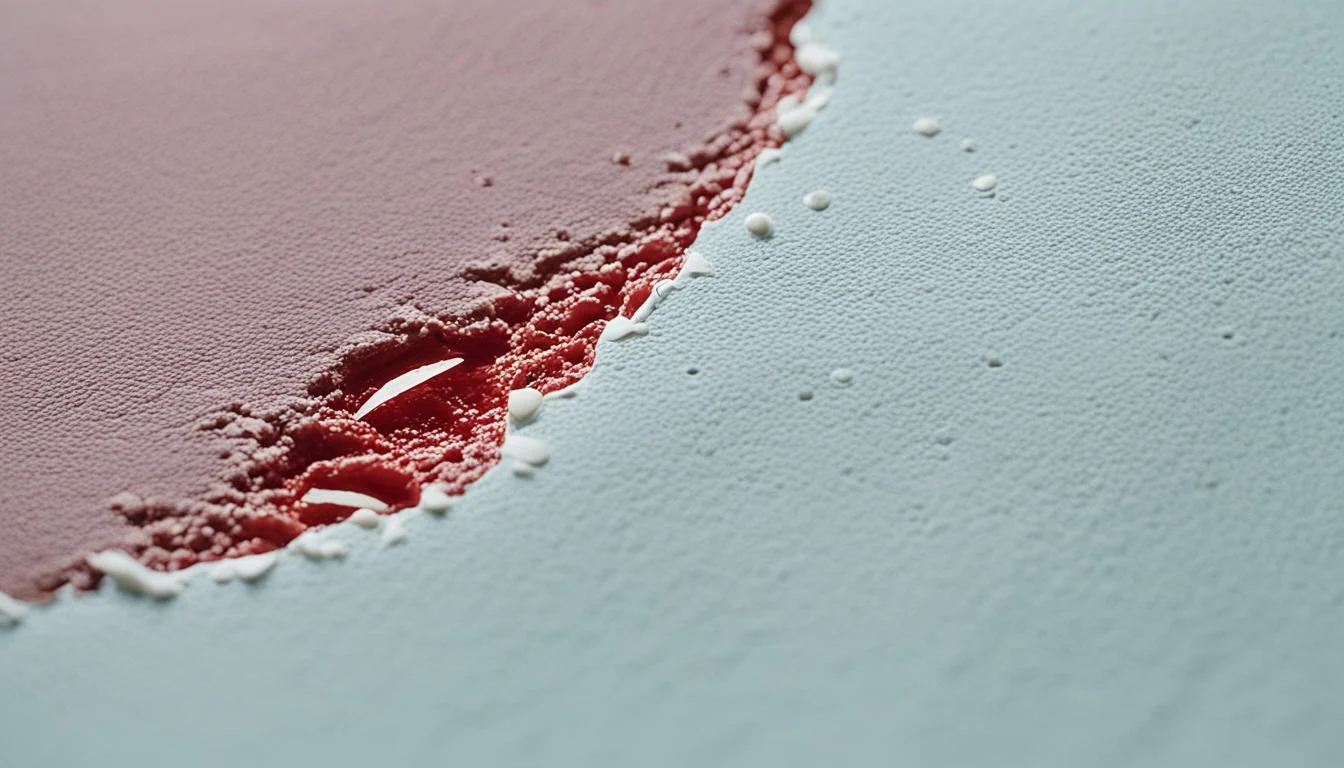
Protection from Infection
Plasters are great at stopping infections. They make a shield that stops germs, dirt, and more. This barrier keeps the wound safe and clean from bad stuff outside.
Maintenance of Moist Environment
Plasters also help keep the wound moist. A moist environment is better for healing and reduces scarring. Changing the plaster regularly keeps the area clean and improves recovery chances.
Hydrocolloid Dressings: Advanced Plaster Options
In the world of advanced wound care, hydrocolloid dressings are a top choice. They are known for their ability to absorb wound fluids and create a moist healing environment. Brands like Elastoplast use this technology to improve their products for better wound care.
What Are Hydrocolloid Plasters?
Hydrocolloid plasters have a special design for covering wounds. They have a gel-forming layer that absorbs the wound’s fluid. This layer turns into a gel to keep the area moist for healing. The main goal is to prevent the wound from getting dirty and to help it heal faster.
When to Use Hydrocolloid Plasters
These plasters are good for wounds that do not leak much fluid. They work well for things like minor burns and sores. Their key benefits include less pain for the patient and not disturbing the healing wound. This makes them a great choice for anyone looking for advanced wound care solutions.
Application and Removal of Hydrocolloid Plasters
Putting on a hydrocolloid plaster is easy and helpful. Start by cleaning the wound area well. Then, take off the backing and gently place it over the wound. Smooth the edges to make sure it’s secure. They don’t need to be changed often because they keep water out. Removing them should be done softly to not hurt the healing wound. Put a new one on if you need to keep the area moist for healing.

